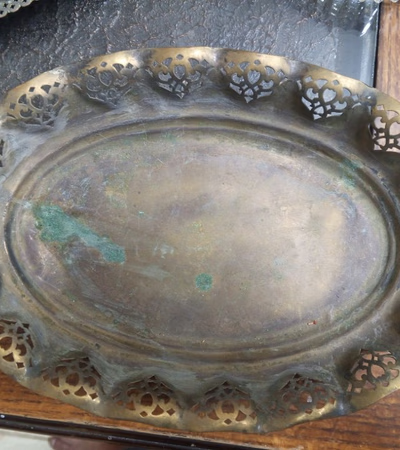Introduction Jordan's art and craft market is a vibrant sector deeply rooted in the country's rich cultural heritage. From handmade jewelry to traditional carpets and folk costumes, the sector not only represents the nation's identity but also serves as a key economic driver. This report provides a comprehensive analysis of Jordan's art and craft market, leveraging trade statistics, economic indicators, and global trends to uncover growth opportunities and challenges. Key Trade Insights Analysis of the trade statistics reveals steady growth in Jordan's export of miscellaneous goods, which includes art and craft products. In 2022, Jordan exported $143.92 million worth of miscellaneous goods, a 9.1% increase from $131.95 million in 2021. This growth indicates rising global demand for Jordanian craftsmanship, particularly in handmade items such as jewelry, sculptures, and decorative arts. However, the import dynamics paint a contrasting picture. In 2022, Jordan imported $2.05 billion worth of miscellaneous goods, a significant increase from $1.74 billion in 2021.
This import-export gap suggests a high reliance on foreign goods, potentially overshadowing local artisans. The footwear category, which includes handmade shoes, also showed a notable increase in imports, rising from $76.62 million in 2021 to $87.07 million in 2022, reflecting a growing domestic demand for such products. Economic Indicators and Market Health Jordan's economic indicators provide a broader context for the craft market. The country's GDP grew from $30.49 billion in 2020 to $34.26 billion in 2022, signaling overall economic recovery and growth. Inflation rates remained moderate, with a slight increase from 1.34% in 2021 to 1.35% in 2022, ensuring relative price stability for consumers and producers. Unemployment, however, remains a concern, with rates hovering around 18.87% in 2022. This high unemployment rate could be leveraged as an opportunity to boost local production in the craft sector, creating jobs for skilled artisans. Additionally, the increase in household consumption expenditure, which rose from $18.15 2020 to $21.15 2022, indicates stronger consumer purchasing power, potentially benefiting the domestic craft market.
Market Trends and Opportunities 1. Rising Demand for Authentic Handmade Goods: The global trend toward sustainable and authentic products has increased demand for Jordanian handicrafts, including handmade bags, shoes, and jewelry. Export growth in the miscellaneous category underscores this trend. Rising Demand for Authentic Handmade Goods: 2. Tourism as a Catalyst: Jordan's tourism sector, recovering post-pandemic, is a significant driver of the craft market. Tourists often seek traditional souvenirs such as folk costumes, decorative arts, and statues, creating a direct link between tourism sales. Tourism as a Catalyst: 3. Digital Transformation: The rise of e-commerce platforms offers an untapped opportunity for Jordanian artisans to reach global markets.
Promoting online sales of products like manuscripts, paintings, and antique furniture can significantly boost exports. Digital Transformation: 4. Government Support and Initiatives: Policies aimed at supporting small and medium enterprises (SMEs) craft sector could enhance production capacity and competitiveness. Subsidies or training programs for artisans could further strengthen the market. Government Support and Initiatives: Challenges Despite its potential, Jordan's craft market faces several challenges: - Competition from Imports: The high volume of imported goods, especially in categories like footwear and textiles, poses a threat to local producers. Competition from Imports: - Limited Global Branding: While Jordanian crafts are unique, they lack strong global branding and marketing, limiting their appeal in international markets. Limited Global Branding: - Economic Pressures: High unemployment and limited access to financing for small artisans restrict the sector's growth. Economic Pressures: Future Outlook The outlook for market remains positive, driven by growing global interest in sustainable and culturally rich products.
If the country can address challenges such as import competition and limited global branding, the sector has the potential to become a significant contributor to the economy. Forecasting into 2025, we expect the export value goods to grow by approximately 8-10% annually, supported by increased tourism and e-commerce adoption. The domestic market is also likely to expand, driven by rising household consumption and government initiatives to support local artisans. Conclusion market is at a pivotal juncture, with immense opportunities for growth and innovation. By leveraging its rich cultural heritage, embracing digital transformation, and addressing economic challenges, the sector can achieve sustainable growth and establish itself global leader in handmade and artistic goods. For businesses and investors, now is the time to explore the untapped potential of this vibrant market.
-
 بیلال 8 ماه قبل
بیلال 8 ماه قبل اردن
سنگ های قیمتی یاقوت الماس عقیق زمرد
اردن
سنگ های قیمتی یاقوت الماس عقیق زمرد
ما سنگ های عقیق یمنی، یاقوت، زمرد، کهربا و مرجان داریم.جزئیات
-
 قطع فنیه 9 ماه قبل
قطع فنیه 9 ماه قبل اردن
عتیقه جات
اردن
عتیقه جات
برای جمعآورندگان نادر، یک بشقاب چینی عتیقه از دوره ویکتوریایی، یادبود الماس سالگرد ملکه ویکتوریا ۱۸۹۷، قطر ۲۱. ۵ سانتیمتر برای فروش.جزئیات
-
 وهب خادر الطاهر 18 ماه قبل
وهب خادر الطاهر 18 ماه قبل اردن
صادرات
اردن
صادرات
مبلمان چوبی جامدجزئیات




